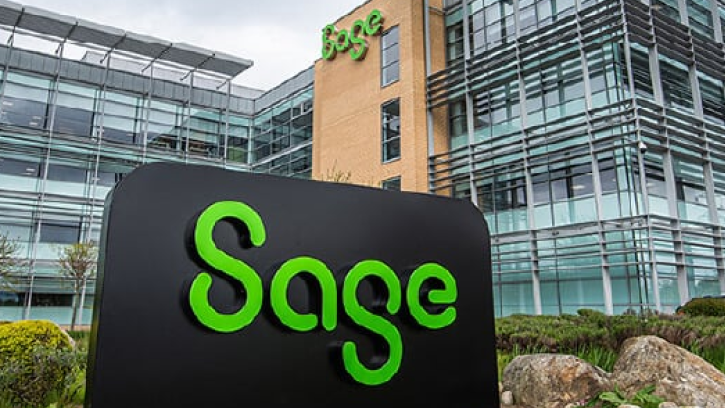
Business services
Technology
Zendesk + UserTesting
Read how the world leader in customer support software masters product design and development


About the company
See how Zendesk utilized UserTesting to test their onboarding experience, increase engagement, and make their form process easier.
Get started now
Contact Sales- 12%Increase in annual recurring revenue based on improvements to the ‘Instant Buy’ function
 Cleaner design and improved customer experience for the admin center, ‘Help’ panel, custom ticket fields, and more
Cleaner design and improved customer experience for the admin center, ‘Help’ panel, custom ticket fields, and more- 300%Boost in clicks on the ‘Get Help’ button
Zendesk constantly adapts the company’s SaaS software to the changing needs of its customers. But it’s a tricky endeavor. Zendesk customers manage communications and support portals for some of the largest companies in the world. The software needs to look great and work seamlessly, so that those organizations can best service their own customers.
Because Zendesk recognizes the criticality of the customer experience, they ensure they test their product functions—and make them as great as they can be—before they go live. We sat down with some of the designers and researchers to learn more about how they’ve partnered with UserTesting to innovate for Zendesk.

Happy new SaaS customers adopt the product, maximize their usage, and renew as ongoing subscription customers. But Zendesk’s leadership noticed that their software’s onboarding page had lower engagement than they would have liked.
The Zendesk Research and Design teams built out a new onboarding experience and tested this with the UserTesting Contributor Network. They created help center articles that enumerated the steps involved in becoming a successful new customer. This resonated with contributors!
Zendesk also tested where to put a ‘get help’ button. This button previously lived under the customer’s profile, in the menu connected to the profile icon. But, when given a choice, contributors nearly unanimously stated that they wanted to see the button on the top right of the screen instead.
Pooja Patel explains, “Changes to the customer onboarding experience went live. The ‘get help’ button is much easier to access, and we saw a 300% increase in clicks on that in the first two months. That means our new customers let us know when they want help—and we’re able to give them the support they need.”

Zendesk has more than 100,000 customers who use custom ticket fields. Custom ticket fields let support agents store and access key details, giving them extra context to help their customers. Zendesk wanted to create an intuitive interface for users to manage data within the platform. The current experience was a scrollable custom ticket field page and UserTesting contributors said it was too long. Taking that feedback into account, Zendesk changed it to a two-step format.
“The new design loaded quicker, and the new, helpful content provided users with an easier experience to create custom fields,” said product designer Mac Le. “The experience is more approachable and doesn’t seem like a massive enterprise form builder. We expect customer satisfaction and usage to increase.”

Another place where Zendesk customers use their custom fields content is Answer Bot— Zendesk’s proprietary chatbot builder. Zendesk’s designers sought to make Answer Bot as easy to use as possible. They watched members of the UserTesting Contributor Network work with the function to identify points of friction. David O’Sullivan says, “Building a chatbot from scratch is not something you can make customers understand intuitively—you need to test what works and what doesn’t. And that’s where UserTesting is essential."
Early prototypes had customers navigating between multiple pages within the Zendesk platform to create a schedule for the chatbot they created. But this workflow frustrated users. The product designers showed Engineering a few key areas for improvement—and Engineering simplified the structure before Zendesk released the product.

Instant Buy allows Zendesk’s subscription customers to buy more user or administrator seats through an online shopping cart experience. By offering quick access to resources and immediate opportunities for account expansion, the function drives revenue for Zendesk and helps ensure customer satisfaction.
The design team had two prototypes for Instant Buy. The first one slid administrators out of their user experience to indicate that their account is out of seats. The second prototype focused more heavily on notifications—what it means to purchase the seats, who on the account has permissions to place the order, what the purchase of seats will cost (including taxes), and so forth. Insights revealed that customers would prefer the second option. Contributors wanted more information up front. And Zendesk would need to be very deliberate with how they spelled out the details for people.
In the first two months after Instant Buy went live, Zendesk achieved a 12% increase in annual recurring revenue. Per Alejandro Gutierrez, “Soon after we launched the Instant Buy function, we received many new orders. And we consider this project a huge customer experience win.”

Zendesk sought to update and improve their main administrator homepage. Before it could go live though, designers needed to ensure that it looked fantastic and worked brilliantly.
Based on Zendesk’s design options, UserTesting contributors provided insight regarding colors, typography, the structure of the navigation bar, information layouts, and movement between screens. 90% of contributors preferred one of the proposed designs—and Zendesk, of course, went live with that option.
Debbie Corbett offers her perspective, “UserTesting helped validate the structure of the new admin center. The experience on my side was much faster and simpler than running in-person research. I would launch a test and then end my workday. The next morning, I’d wake up to six results from UserTesting!”

Zendesk plans to streamline bulk management, where customers can select and change similar items from lists, rather than adjusting them a seemingly unlimited number of times. The organization’s engineers and designers plan to deliver a consistent experience across functions—within a support ticket, within lists of job functions, and inside product guides and articles.
UserTesting contributors with CRM experience help Zendesk understand how they can fine tune this nuanced experience. Because once admins can master navigating bulk management in different areas of Zendesk, their work will become simpler and easier. They’ll be happier customers who get more value from their implementations and renew their services.
Tess French adds, “I love the confidence that UserTesting gives us. UserTesting projects enable us to hear from people and present results back to management. Customer opinions are the results. They confirm the direction that we should take and there’s not a lot of disagreement after that, especially when customers tell you directly whether something works or not.”

Zendesk is currently testing a new Help panel. The hope is that a more intuitive Help panel will increase adoption for potential customers using a trial version of the software, raise engagement and usage, diminish support requests, and create an easier onboarding process for Zendesk’s new customers.
UX Researchers at Zendesk had members of the UserTesting Contributor Network assess the navigation of the new Help panel across multiple design options. They also reviewed the emails that would automatically generate from the ticketing support system and send to the customers of Zendesk users.
According to Mandy Kim, “Running in-person studies can get extremely expensive—not to mention the challenges that come with recruiting and screening participants. With UserTesting, we don’t need to worry about that. We can focus on building out self-service functions for customers and show our executives how those projects are progressing to meet our corporate objectives.”






